Who discovered the invisible "radiation"?

Accidental discovery of "the strange ray" or X-ray
In 1895, a German physicist, Willhelm Conrad Roentgen, discovered a "ray that penetrates things" while conducting a different experiment. This finding was followed by successive discoveries concerning radiation.
Wilhelm Conrad Roentgen
(1845-1923)
the X-ray discovery won him the Nobel Prize in physics in 1901.
X-ray photo taken by Roentgen on 23rd January 1896, of Albert von Kölliker’s “transparent hand showing bones”
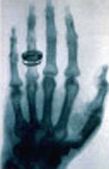
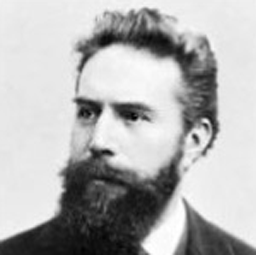
Discovery of the X-ray
By the discovery of X-rays, the existence of radiation and radioactive materials was recognized for the first time. In his experiment, Roentgen created a vacuum in a glass tube by removing the air inside. He charged the tube with several thousand electric volts to let it discharge. He noticed that a fluorescent substance placed nearby the tube was emitting light, although the tube was covered with thick paper. As the tube was "producing an invisible beam that penetrates substances", Roentgen named the mysterious beam "X-ray".
Antoine Henri Becquerel
(1852-1908)
He became the 1903 Nobel laureate in physics by the discovery of Radioactivity.
The photographic plate* Becquerel accidentally exposed to a uranium compound
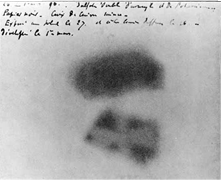
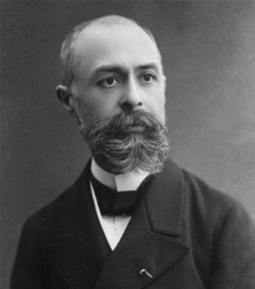
Discovery of Radioactivity
In 1896, a year after the discovery of X-rays by Roentgen, the French physicist Antoine Henri Becquerel developed a photographic plate* that was kept in a dark place with a uranium compound (rock salt containing uranium) placed on top of it. The plate showed signs of reaction to light despite the fact that it had not been exposed to sunlight.
Becquerel concluded that uranium compounds have a certain ability to emit radiation similar to X-rays.
*Equivalent to today's photographic films.
The Curies : Pierre
(1859-1906)
The Curies : Marie
(1867-1934)
In 1903, they shared Nobel Prize in physics for their research on radioactivity.
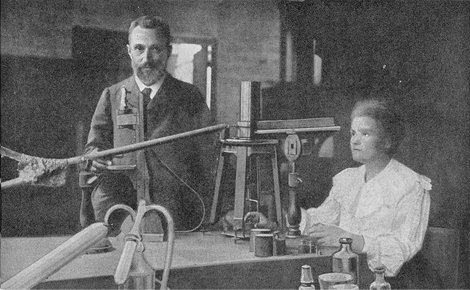
Understanding Radioactivity
Inspired by the discoveries of Roentgen and Becquerel, Marie Curie used measuring equipment her husband and his associates had invented and found that the source of radiation in the uranium compound was the uranium atom. She named its ability to emit radiation "radioactivity".
Marie received the Nobel Prize in physics together with her husband, Pierre, and Becquerel. Eight years later, she earned a second Nobel Prize in chemistry.
Ernest Rutherford
(1871-1937)
His finding that the atoms forming radioactive materials transmute into stable materials by emitting radiation won him the Nobel Prize in chemistry in 1908. He was praised as the "father of nuclear physics".
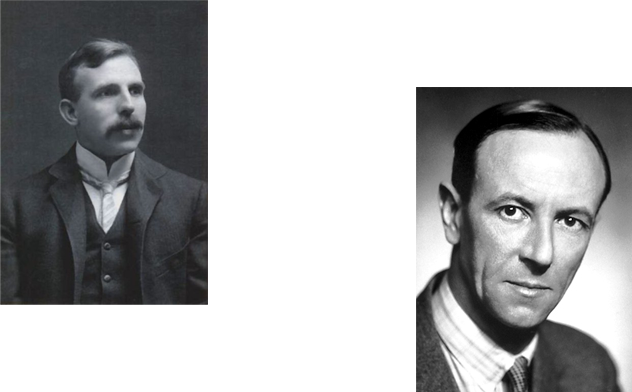
James Chadwick
(1891-1974)
He became a Nobel laureate in physics in 1935 through his discovery of neutrons.
Different types of radiation
In 1898, Rutherford and his associates in Britain discovered two different forms of radiation released from uranium. They named them alpha and beta rays. Alpha rays were found to be the flow of positively charged heavy particles, or "helium nuclei", whereas beta rays were the "flow of negatively charged light particles (electrons)". The "radiation with powerful penetration and without electric charge" was named gamma ray. The X-ray is a member of the gamma ray group. In 1911, Rutherford and his team discovered the existence of a nucleus in an atom. In 1932, Chadwick, a pupil of Rutherford, concluded that the radiation (neutron) generated by irradiating beryllium with alpha rays was inexplicably larger in quantity than the gamma ray, which led to the discovery of the neutron.

